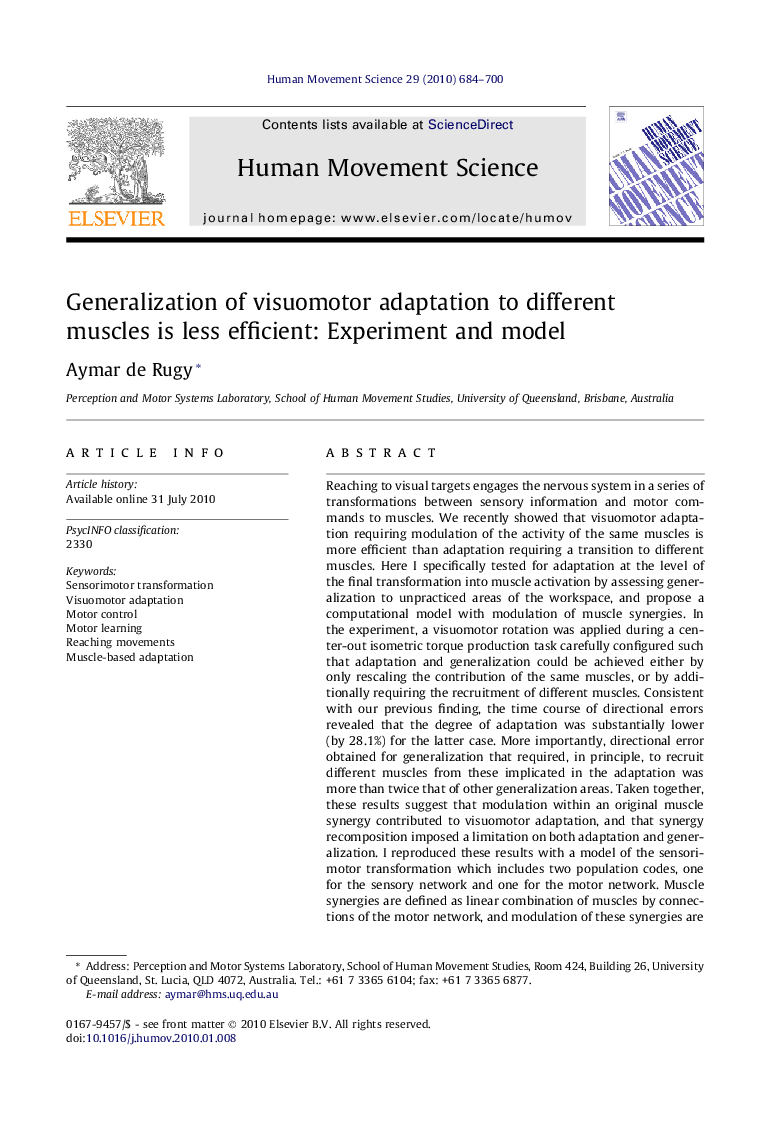| کد مقاله | کد نشریه | سال انتشار | مقاله انگلیسی | نسخه تمام متن |
|---|---|---|---|---|
| 928707 | 922384 | 2010 | 17 صفحه PDF | دانلود رایگان |

Reaching to visual targets engages the nervous system in a series of transformations between sensory information and motor commands to muscles. We recently showed that visuomotor adaptation requiring modulation of the activity of the same muscles is more efficient than adaptation requiring a transition to different muscles. Here I specifically tested for adaptation at the level of the final transformation into muscle activation by assessing generalization to unpracticed areas of the workspace, and propose a computational model with modulation of muscle synergies. In the experiment, a visuomotor rotation was applied during a center-out isometric torque production task carefully configured such that adaptation and generalization could be achieved either by only rescaling the contribution of the same muscles, or by additionally requiring the recruitment of different muscles. Consistent with our previous finding, the time course of directional errors revealed that the degree of adaptation was substantially lower (by 28.1%) for the latter case. More importantly, directional error obtained for generalization that required, in principle, to recruit different muscles from these implicated in the adaptation was more than twice that of other generalization areas. Taken together, these results suggest that modulation within an original muscle synergy contributed to visuomotor adaptation, and that synergy recomposition imposed a limitation on both adaptation and generalization. I reproduced these results with a model of the sensorimotor transformation which includes two population codes, one for the sensory network and one for the motor network. Muscle synergies are defined as linear combination of muscles by connections of the motor network, and modulation of these synergies are elicited by adaptation of the weight of these connections. Finally, I speculate that the limitation imposed on synergy recomposition originates in the balance of inhibitory and excitatory mechanisms that operate at different levels of the nervous system, and that contribute to the functional organization of muscle recruitment by focusing activity on relevant muscles.
Journal: Human Movement Science - Volume 29, Issue 5, October 2010, Pages 684–700